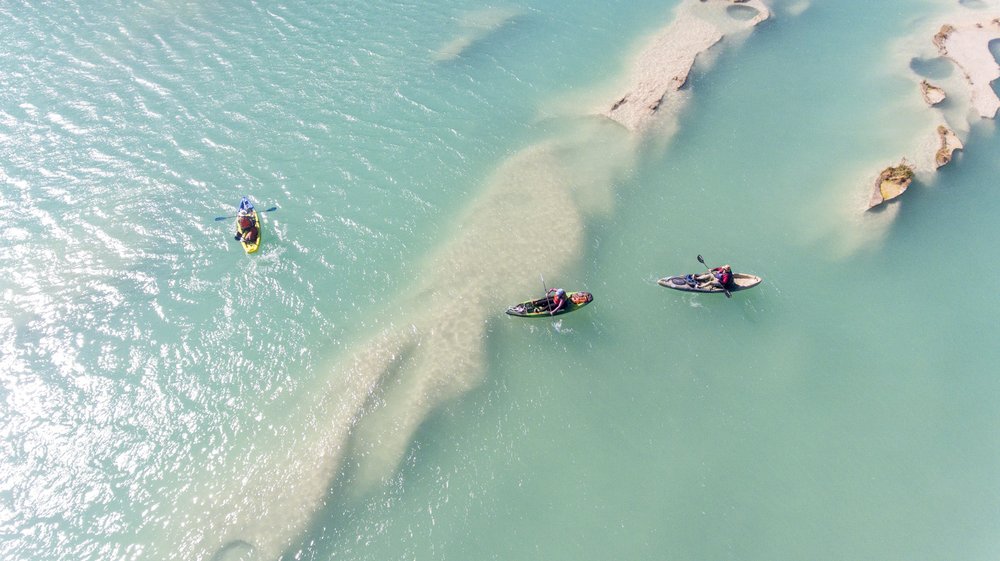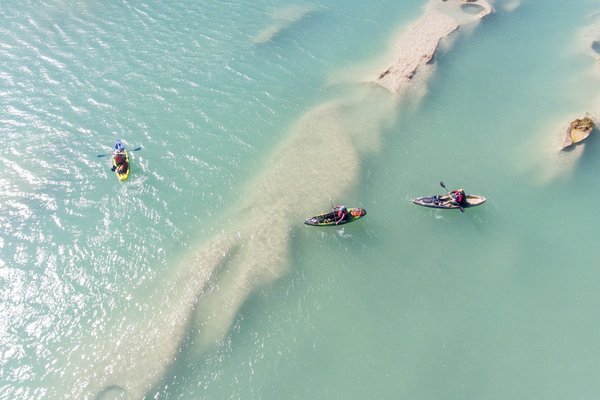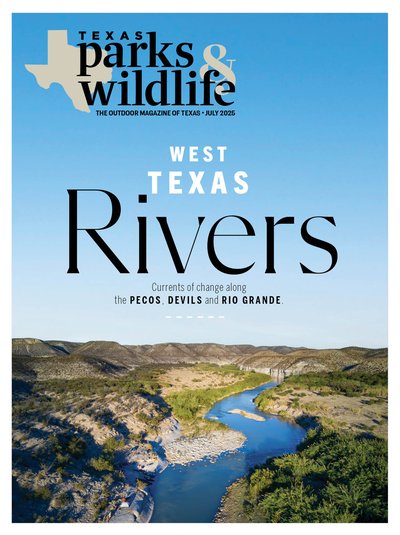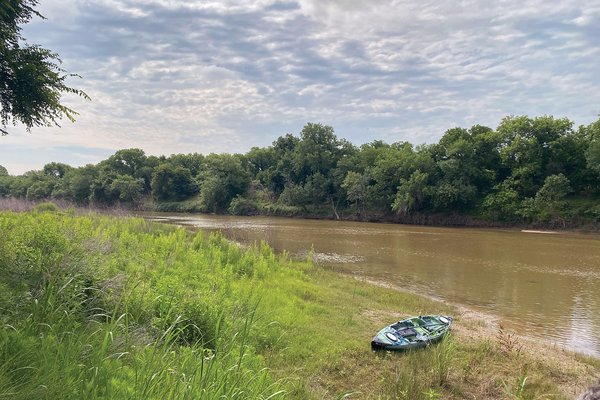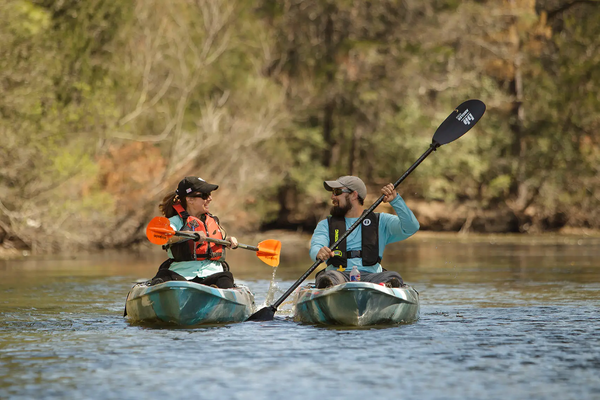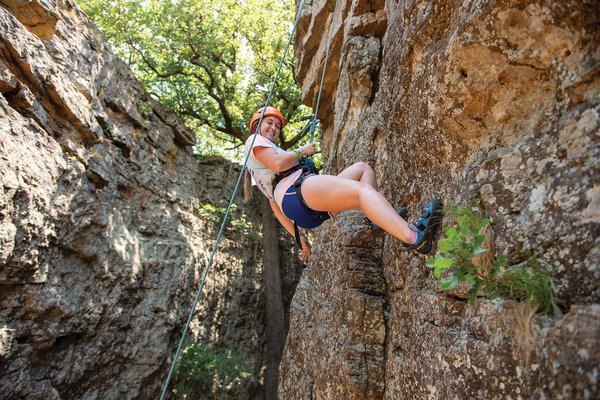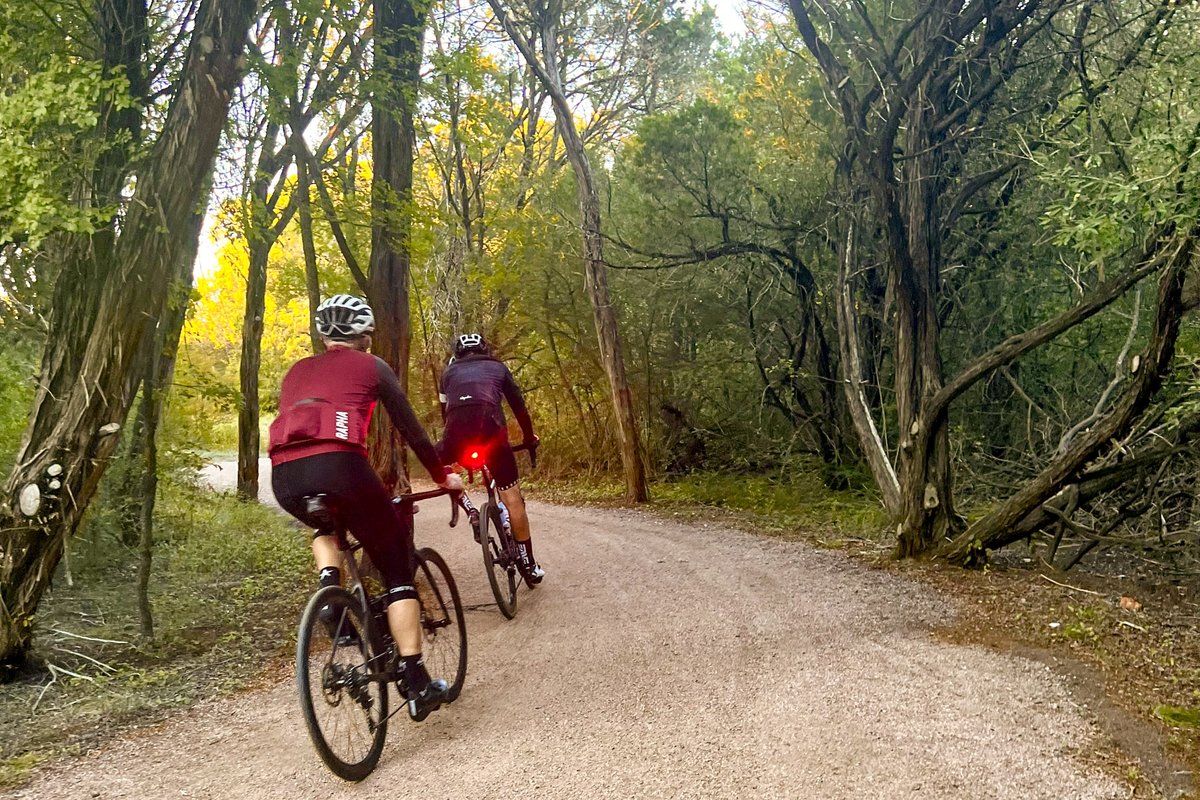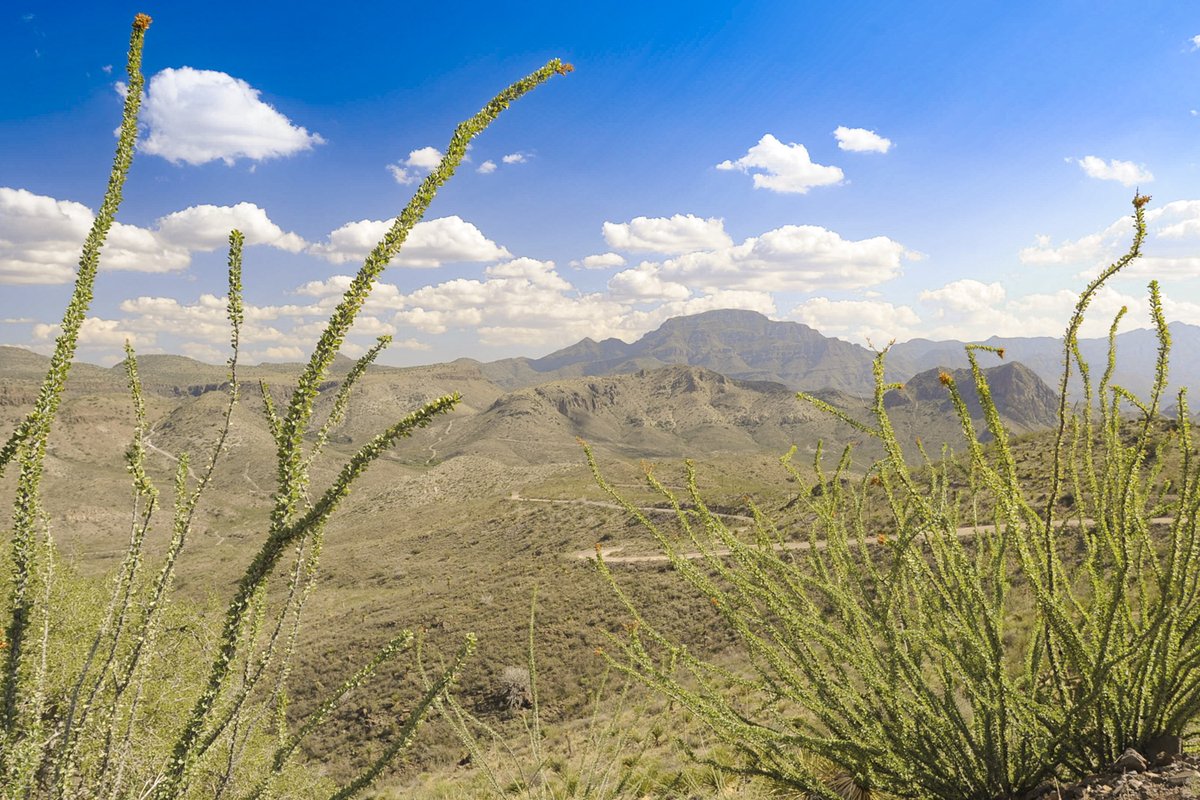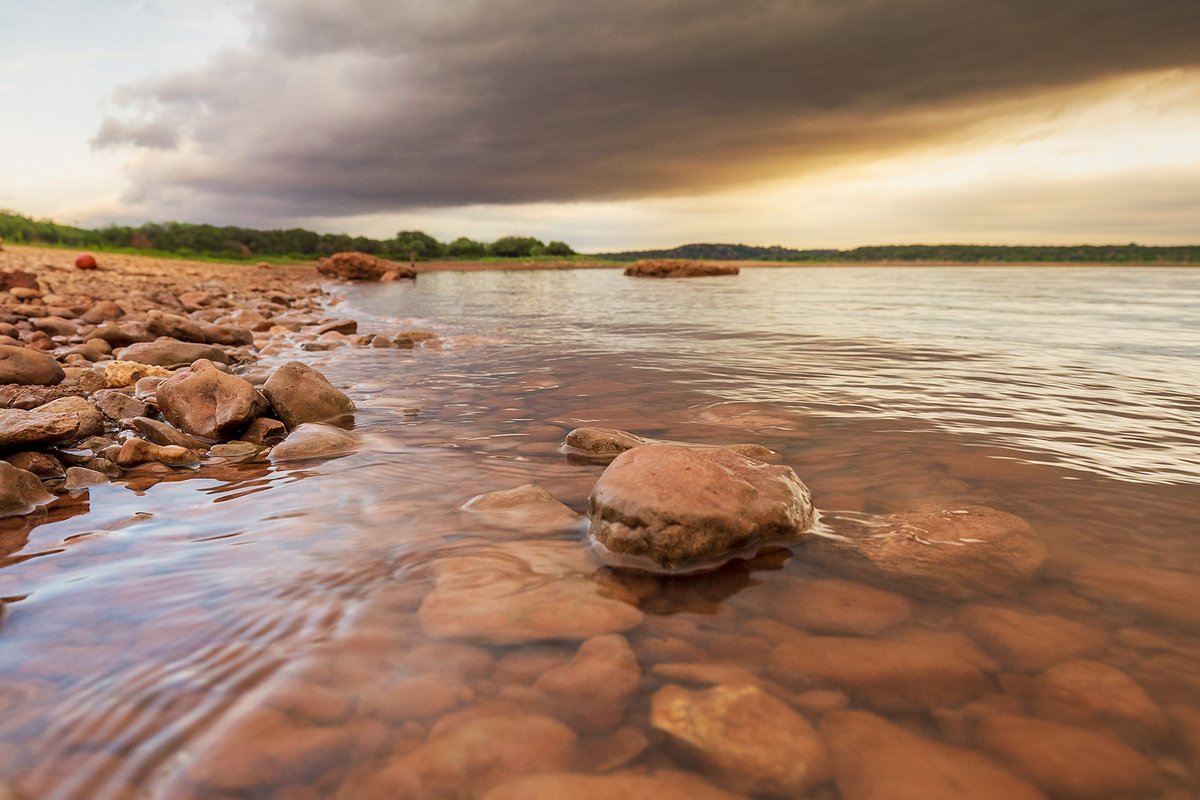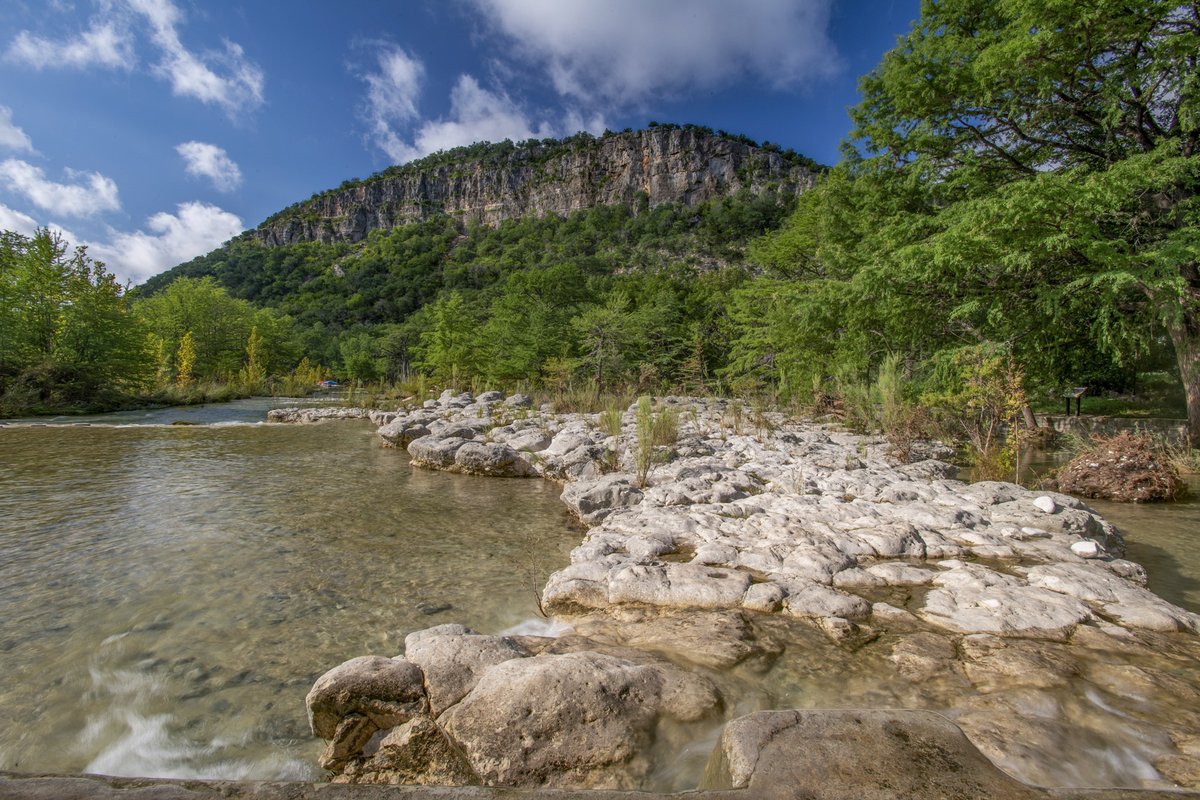The sound of rushing water ahead alerts us to upcoming rapids, and our paddling group forms a flock in the sparkling blue pool just before the river becomes a frothy cascade. We look at each other. Who will be brave and go first?
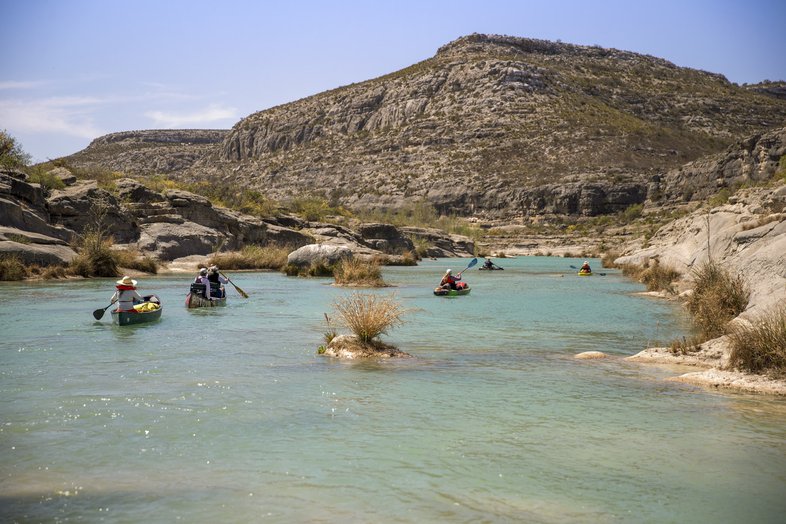
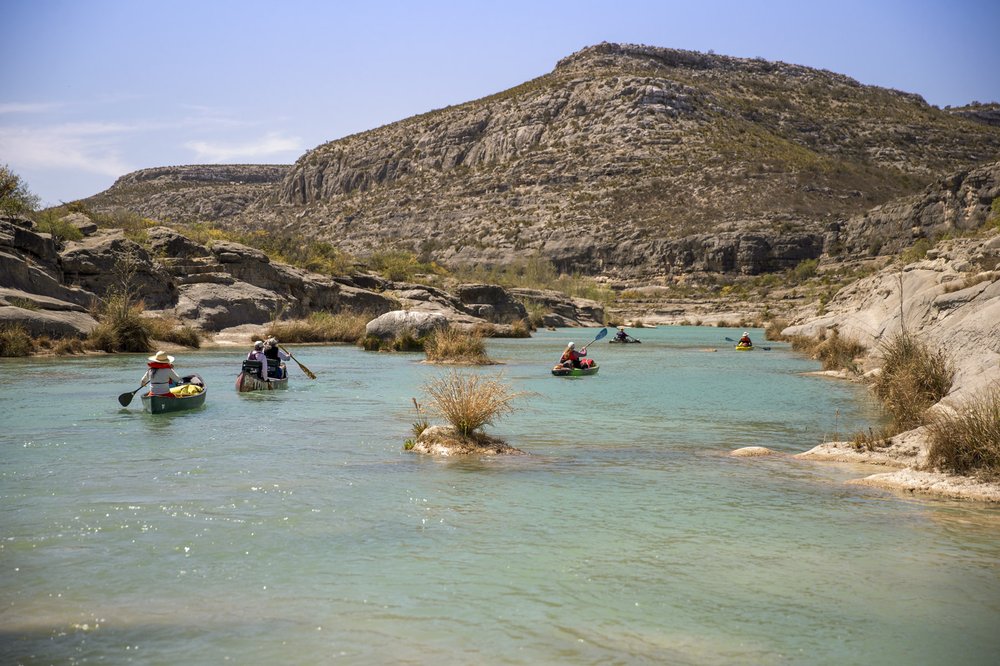
The river contrasts with the arid land on either side.
Maegan Lanham
The river contrasts with the arid land on either side.
Maegan Lanham
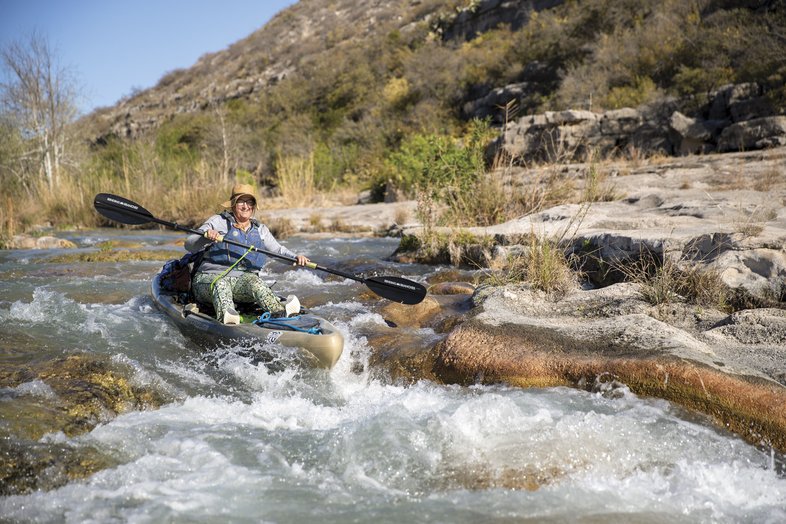
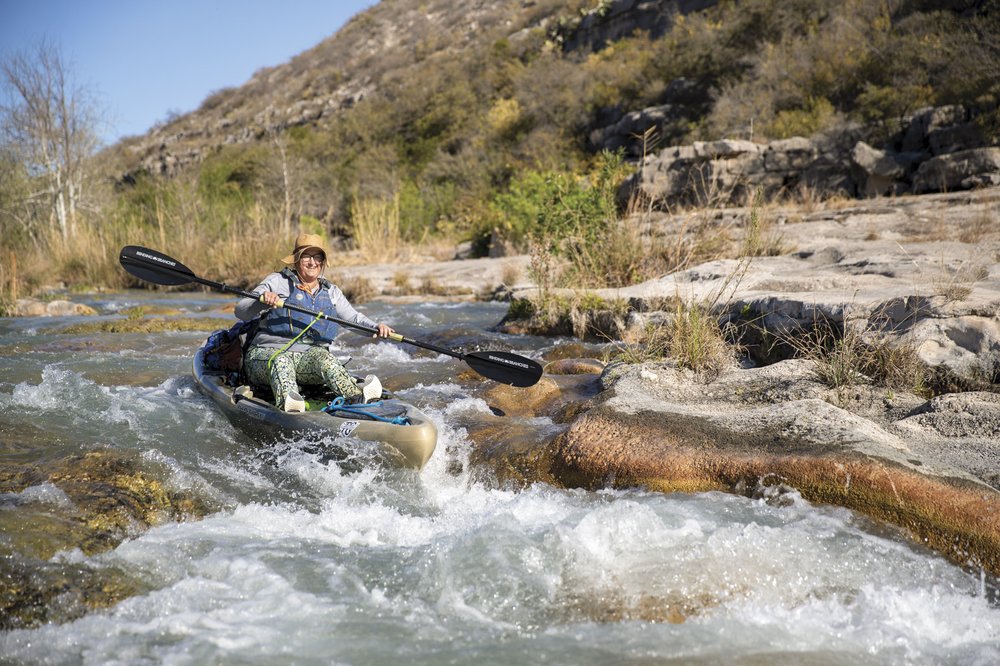
A paddler navigates a rapid on the river.
Maegan Lanham
A paddler navigates a rapid on the river.
Maegan Lanham
Finally, Maegan takes the plunge, and we watch her slide gracefully down the rapids, then disappear from view. I take a deep breath and follow. A few adrenaline-filled minutes later, we gather at the bottom and compare notes. One swamped canoe, one runaway water bottle we had to swim for, at least four cuts and bruises, Maegan points to a scrape along her leg oozing blood. “I left the Devils some of my skin,” she says. “It's a peace offering.”
The Devils River is a much-storied waterway in Texas. A ribbon of blue-green snaking through the thorny brush and dusty rock of the West Texas desert, the river is remote, pristine and backed by a passionate group of advocates who help keep it that way. As soon as you set eyes on the Devils, you'll understand their fervor.
“The river is this unparalleled natural landscape and natural resource that Texans can be really proud of,” says Romey Swanson, the director of the Devils River Conservancy.
Over the course of two days, we're lucky enough to be able to see 14 miles of it. And thanks to a Texas Parks and Wildlife Department property that opened earlier this year, we were able to plan and execute the trip ourselves, without a shuttle service.
The 14-mile stretch we paddled connects the Del Norte Unit of Devils River State Natural Area with the new Dan A. Hughes Unit. Together, the units encompass 37,000-plus acres of dramatic, brushy canyonland in Val Verde County. Most of the Devils is flanked by private land, so the opening of the Dan A. Hughes Unit downriver creates an exciting opportunity for paddlers.
“To me, it's the perfect opportunity,” says Kevin Stafford, the superintendent of the newly opened Dan A. Hughes Unit. “It just requires a little extra planning.”
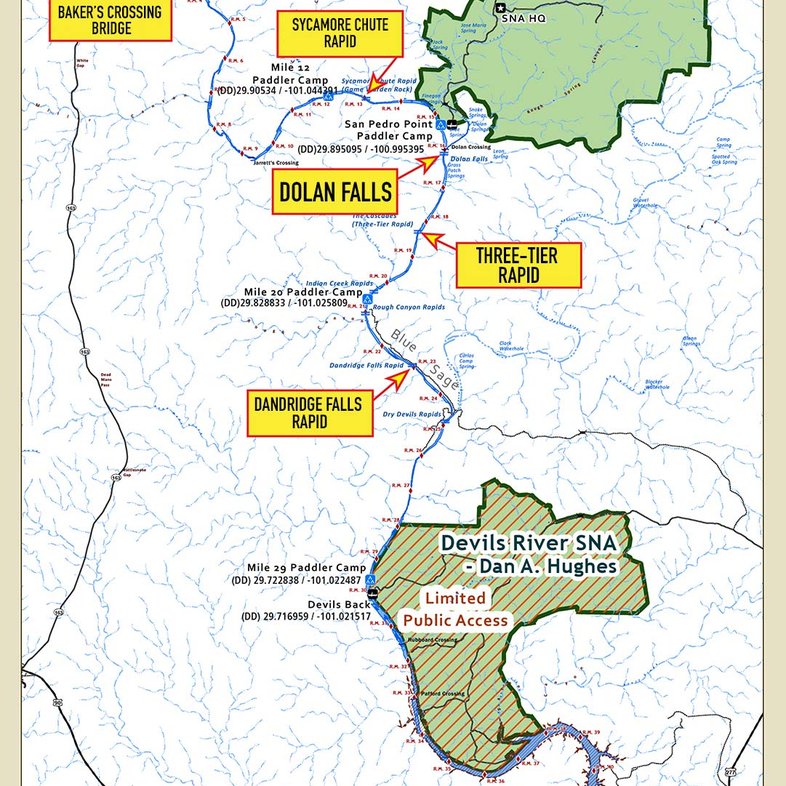
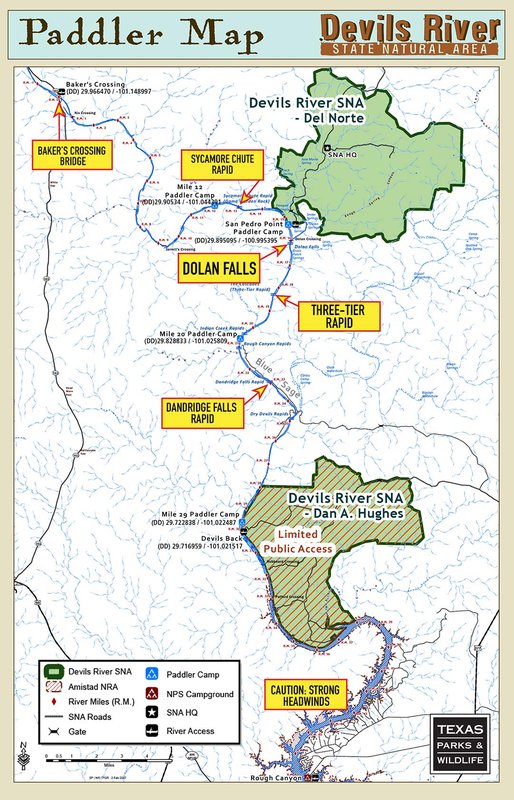
Better the Devils You Know
Our group had been scheming about the trip for months, and the consensus was that the planning was harder than anything we'd likely encounter on the river. Given the choice between wrangling seven busy people to find a three-day stretch of free time, and running the fast-flowing, steep Three Tier Rapid, I'd choose the rapid any day. But there is no running these rapids without planning, so we push through.
Weeks before the trip, we book our Devils River Access Permits, call the two units of the park, set up our camping reservations and check — and double-check — our packing lists. Finally, the week arrives.
The night before we set off, we drop our kayaks at the river at Del Norte (the river is about a third of a mile from the parking lot, so be prepared to hike in with your boats). Then we all set off to the Dan A. Hughes Unit to drop three cars at the takeout. After we park, we walk down to the water. High above us, an eagle's nest sits nestled in the side of the towering cliff.
On the way back, we cram into one car, the energy giddy and nervous. As we drive the two hours back to Del Norte, I can't tell if my stomach is queasy from nerves or the persistent bumping of the car over the rough roads.
It's around this time I realize that we're likely not going to have cell service for the next two days. I text my friends and family and kiss my DuoLingo streak goodbye. That night, we make camp in the Del Norte Unit, tucked down a short driveway from the main park road. The stars come out and shine a silvery light, and we fall asleep to the sounds of the desert evening.
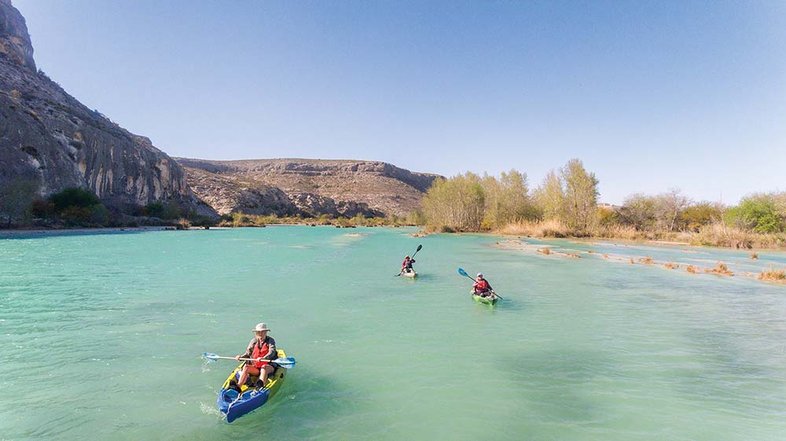
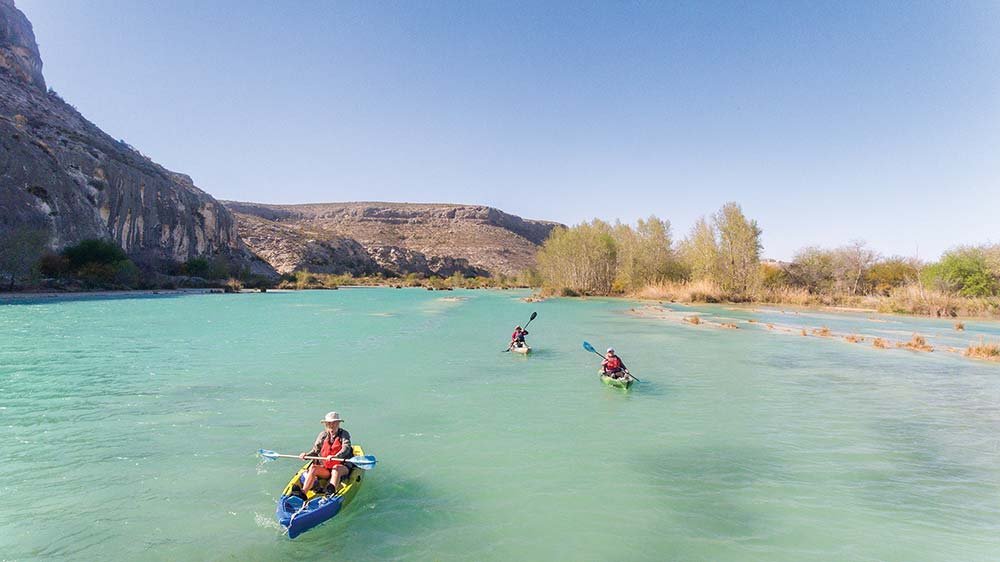
The Devils River flows mostly over limestone.
The Devils River flows mostly over limestone.
Day 1
“I can't eat breakfast — I have butterflies,” says Laura. We've been packing our gear all morning, arranging and rearranging our belongings in dry bags to make sure we'll have access to everything we need once we get out on the river.
As we drag our boats to the put-in, the wind whips at our faces. It's going to be a headwind today, and the gusts are stirring up waves on the water.
Maegan, Laura and I are antsy — we put in while the others are eating breakfast so we can paddle upriver for a bit, letting the wind push us as we look around at the sights on the way to Finegan Springs.
It's my first time really taking in the color of the water. The Devils is a shocking aquamarine. No iron-rich clay to paint the water terra cotta like the Red River, or brown sediment that lends the Sabine its raw umber hue. The Devils is fed by a system of karst springs, and flows over limestone for most of its 100 miles, which is why it maintains its unique bright blue waters.
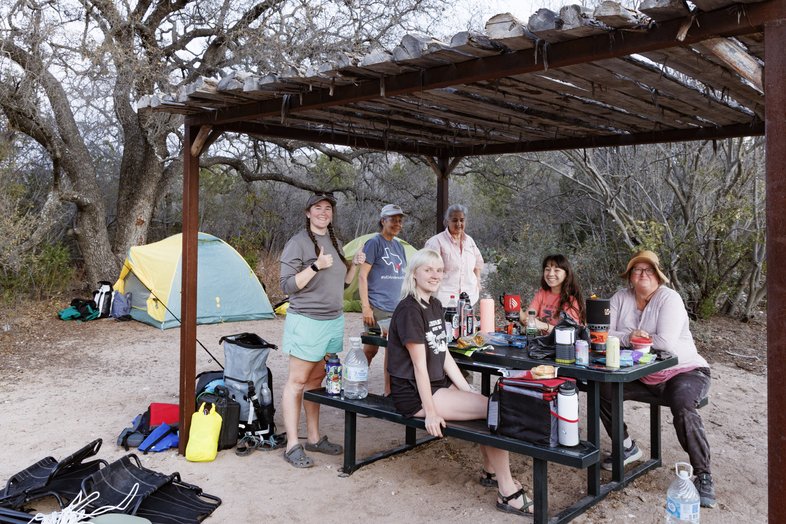
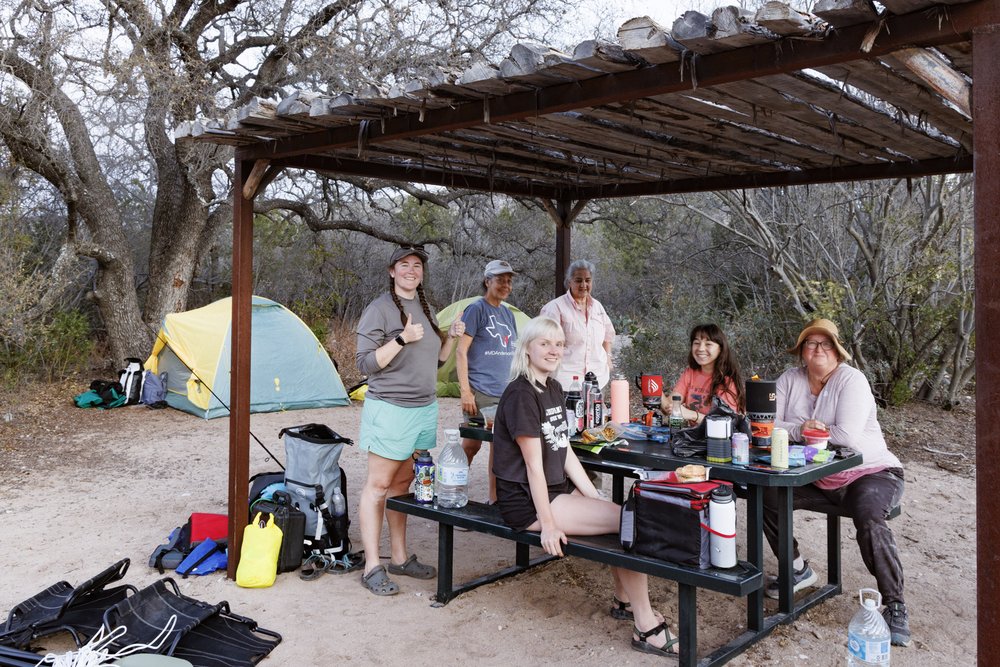
The paddlers at the Del Norte Unit before launching.
The paddlers at the Del Norte Unit before launching.
Our group is composed of seven women, four of us in kayaks and three in canoes. All of us work for this magazine or have a direct connection to it. One of us, our senior staff writer Morgan, has paddled a stretch of the Devils before, but most are here for the first time. We all gather together at the put-in, then set off, squinting into the wind.
Within just a few minutes, we cover one river mile and arrive at our first portage: Dolan Falls, a 10-foot waterfall cascading through current-carved limestone.
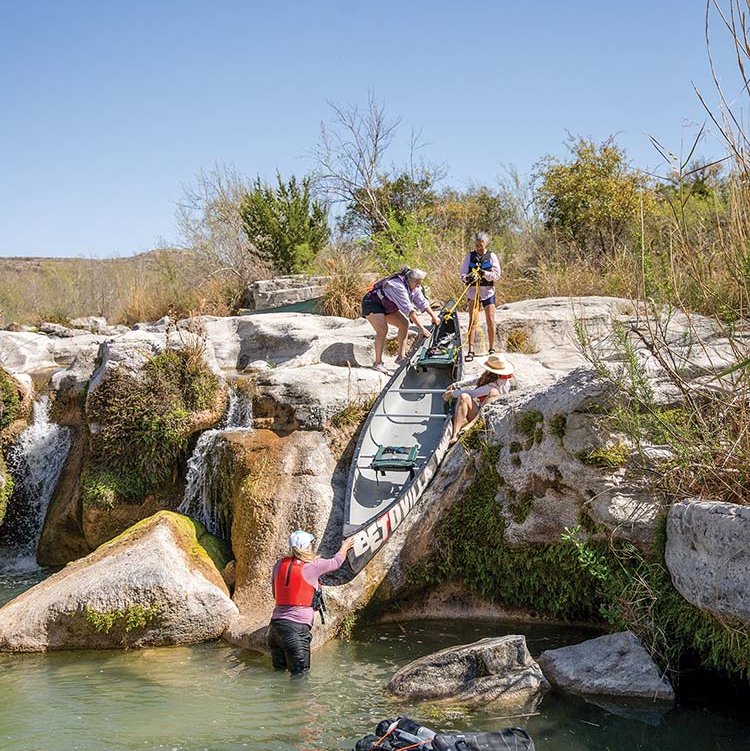
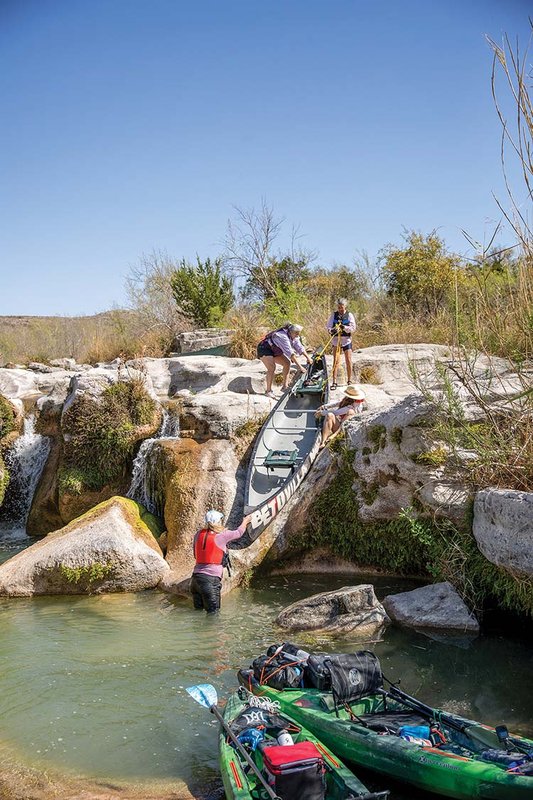
A smooth rock slide provides a place to portage Dolan Falls.
A smooth rock slide provides a place to portage Dolan Falls.
When it comes to this stretch of the Devils, we've been given some general advice: If you're unsure which route to take, go to the left. We decide to follow this guidance on the Dolan Falls portage, and carry our boats down a smooth stone slide into a pool at the base of the falls.
A couple of us go for swim as we wait for the others. I anchor my feet on a rock near the base of the falls and let the flow hold me in place. This is the life!
The five-mile paddle today takes around six hours with the headwind and another hazard-marked rapid, the infamous Three Tier. The campsite at river mile 20 is a welcome sight as it finally comes into view. TPWD leases this campsite and another (at river mile 12) to provide legal places for paddlers to camp.
We pull our boats onto the dirt and jump out to explore. The fluffy yellow blooms of honey mesquite and huisache trees glow in the sunlight, and we chat and make several trips down to the river to swim and filter our drinking water before we settle in for the evening.
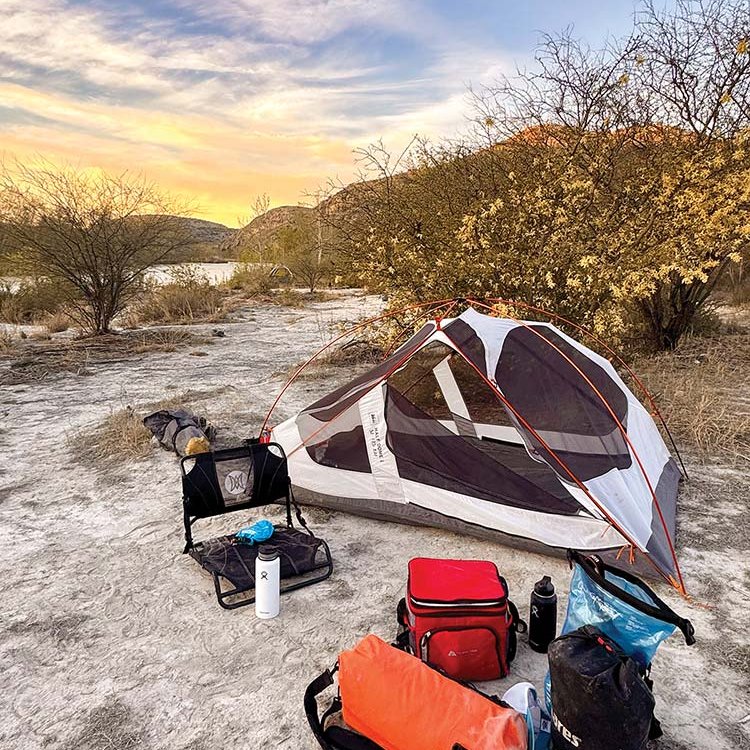
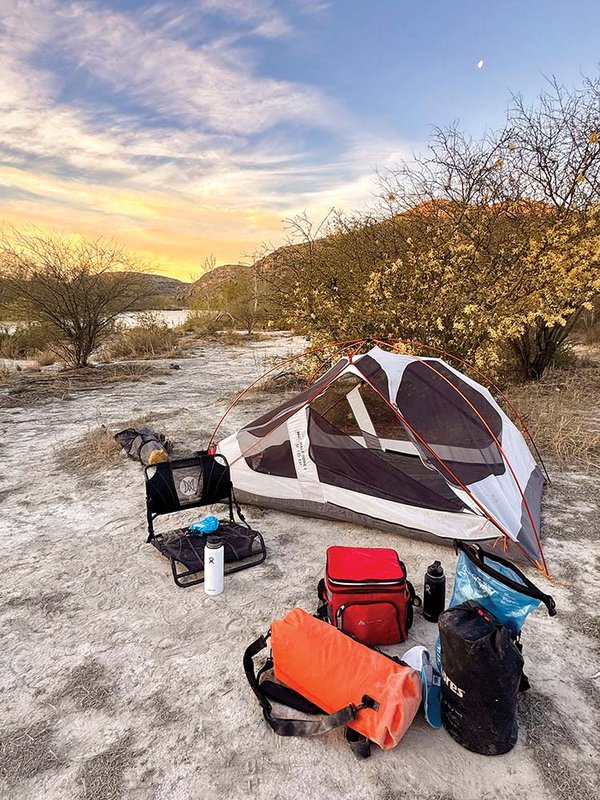
Campsite at river mile 20.
Campsite at river mile 20.
Day 2
“At camp, the night seems to stretch on and on. I wake up hours before sunrise to howling winds, and when I unzip my tent and look up, the stars are obscured by dust.
When I wake up in the morning, though, the air is clear. It's like the overnight dust storm never happened. Then I feel the thin layer of sediment on my sleeping bag and across my face.
Today we have nearly 10 miles to paddle to our takeout at the Dan A. Hughes Unit. After yesterday's headwind, we're apprehensive, but as we begin loading our boats we feel the breeze at our backs.
It's almost too good to be true. As we set off at around 9 a.m., it feels as though the wind is gently guiding us home. The nine-plus miles today suddenly feel less daunting.
Despite there being fewer hazards today (there is only one major rapid on the map, Dandridge Falls), there's still plenty of excitement. On one stretch, we weave through a maze-like stand of tall reeds, each charting our own path. Further on, in a wide-open stretch where the water is deep and dark turquoise, we pass two anglers and a young child on a boat.
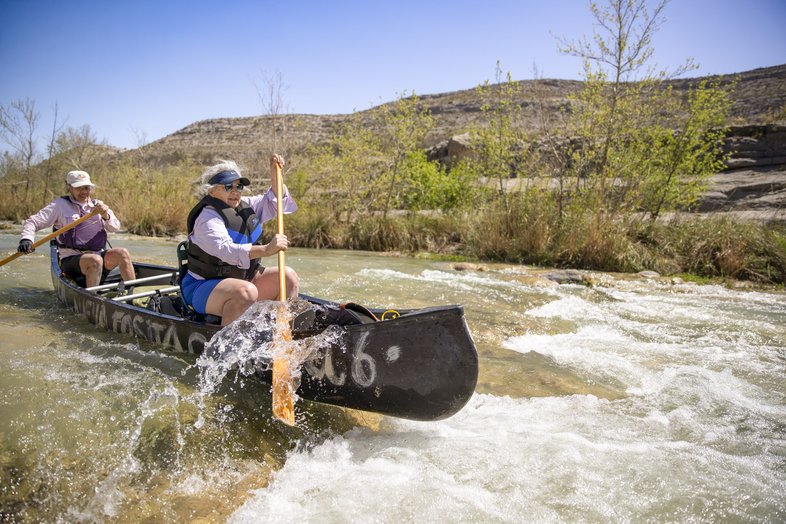
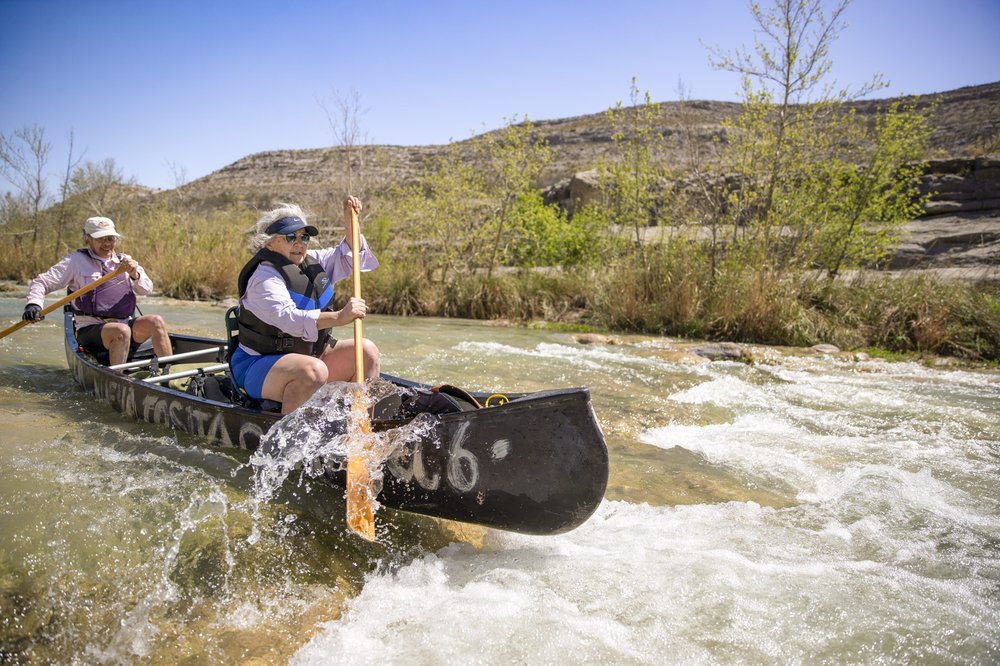
The author's mom and friend paddle through a rapid.
The author's mom and friend paddle through a rapid.
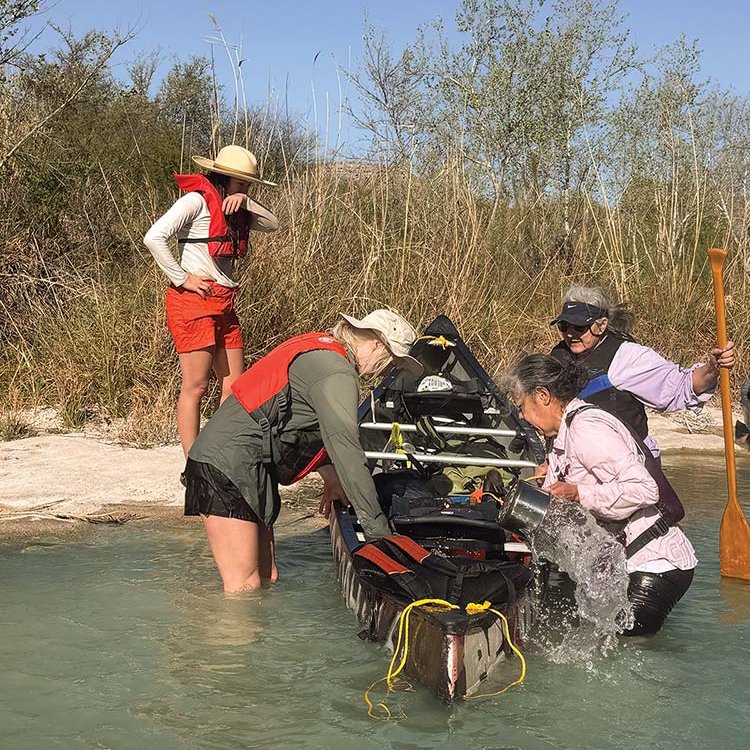
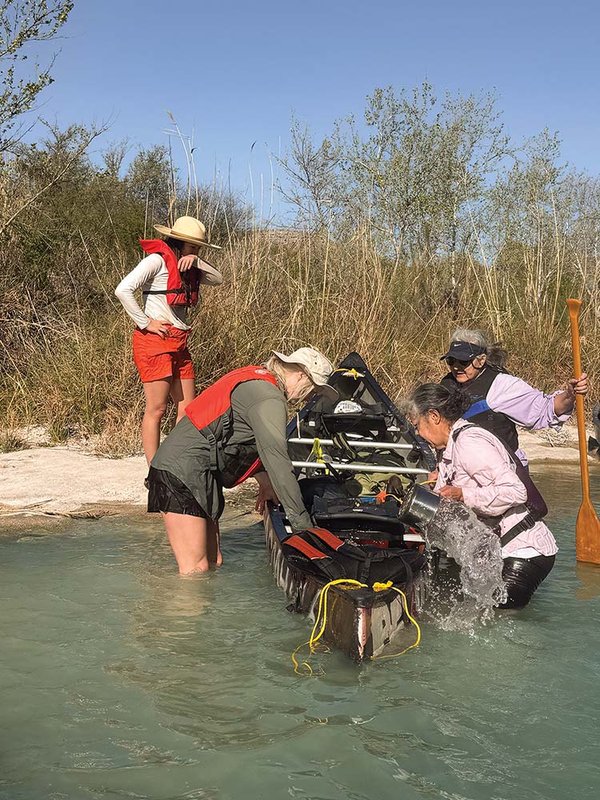
The group bails out a swamped canoe.
The group bails out a swamped canoe.
Sooner than expected, we arrive at Dandridge Falls Rapid, which turns out to be a hazard indeed, despite the low flow rate. Most of us make it down with minimal snags, but one of the canoes swamps and we all pitch in to bail it out, collect floating belongings and better secure our gear. I cut myself on a sharp rock as I dog-paddle toward the aforementioned escaped water bottle.
Further along, we pass beautiful houses perched on cliffs above the river. The landowners here are protective of their paradise, part of the reason why the river is so pristine. (“We've arrived at this moment primarily on the backs of private land stewardship,” says Swanson.)
More often than not, we see nothing but wild land on either side of us as we float along. One stretch downriver of the Dry Devils Rapid is especially stunning to me. On either side of the boat, the limestone banks meet seamlessly with the blue-green water before rising steeply up into brush-covered cliffs.
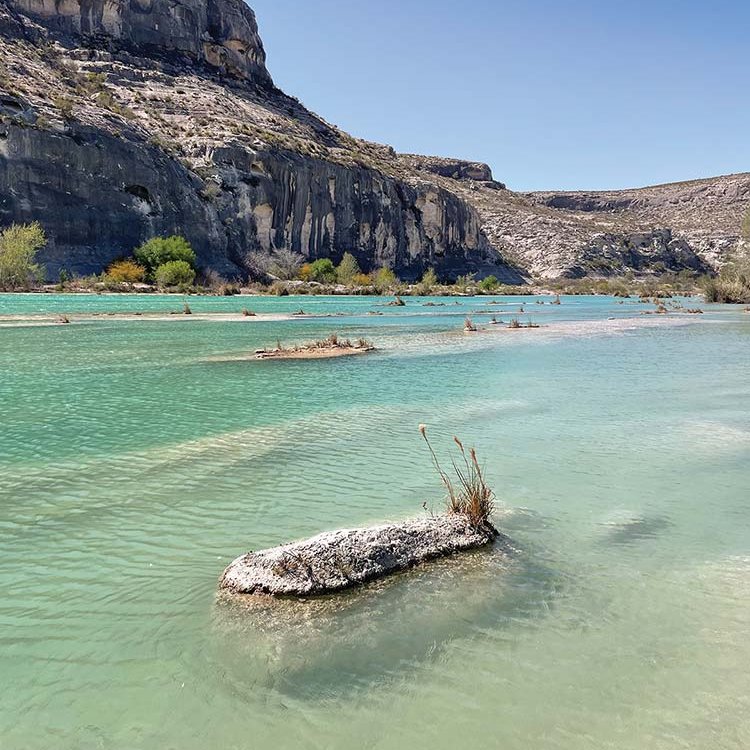
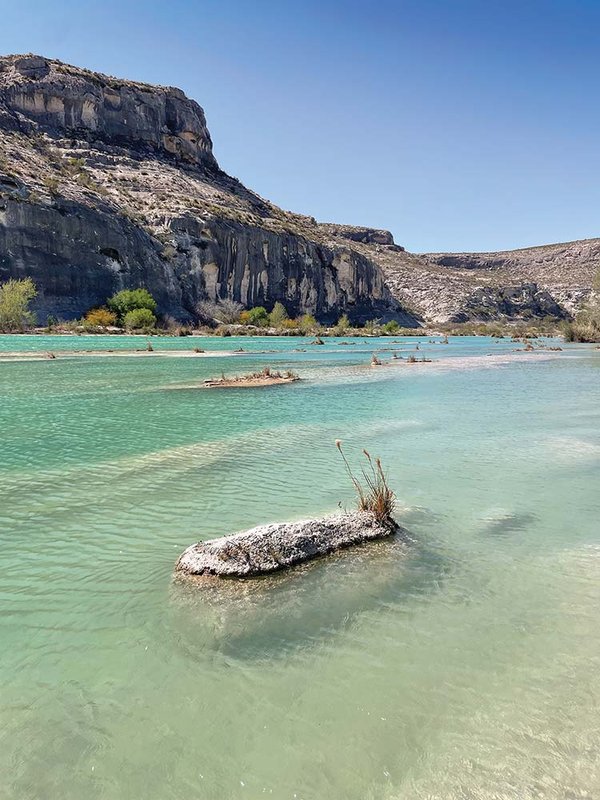
The takeout is a welcome sight after a long paddle.
The takeout is a welcome sight after a long paddle.
It's a beautiful landscape that feels somehow comforting, like being cradled in smooth rock, and I think of the past people that this waterway has protected and sustained. The Devils has been an important place for the people of this area going back thousands of years, as evidenced by the numerous rock art sites tucked away in these hills (you can see some examples of rock art at the Dan A. Hughes Unit of Devils River State Natural Area).
As the sun crests noon and begins to sink again, we're drawing close to the takeout. I recognize this stretch from when we dropped the cars.
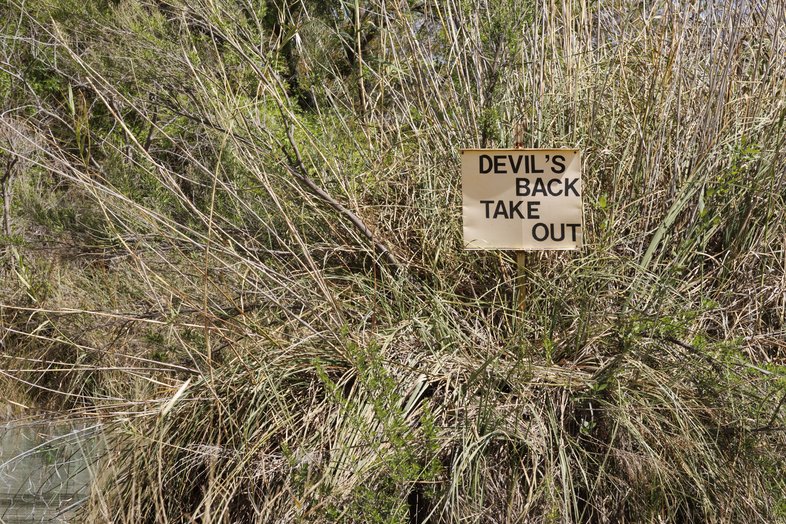
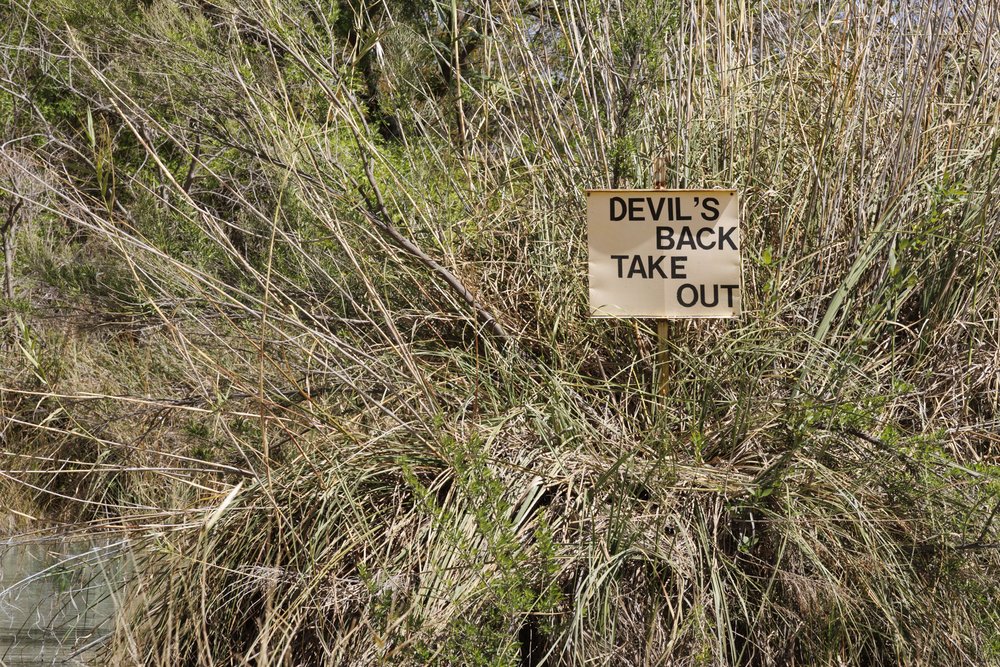
Sonja Sommerfeld
Sonja Sommerfeld
Finally, there it is! The eagle's nest high above us. The eagles are impassive, looking out from their lofty perch. Still, I can't help but feel that they're welcoming us back after our journey.
We pull our boats over at the Devils Back takeout. The ground here looks solid, but it's covered in a thick, light-colored mud that sucks at my shoes. Once out of the river, I flop down on the grass and examine my muddy, bloody legs.
I too have left my sacrifice to the Devils — the skin from one of my knees and shins. My feet are blistered, and my legs are splotchy with bruises. But it feels like more than a fair trade for the sun-drenched, azure memories of the trip, and the pride of doing it ourselves.
